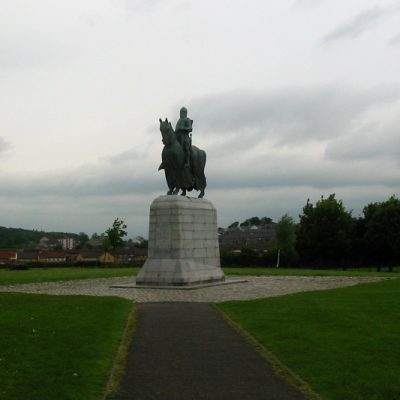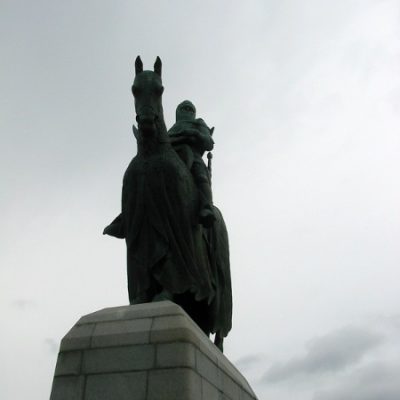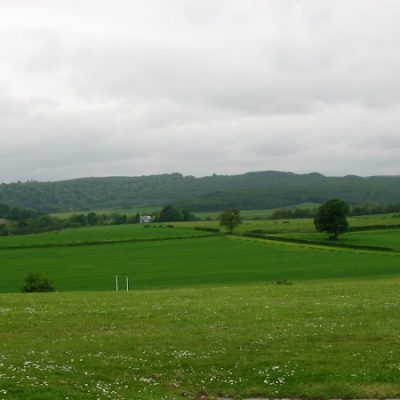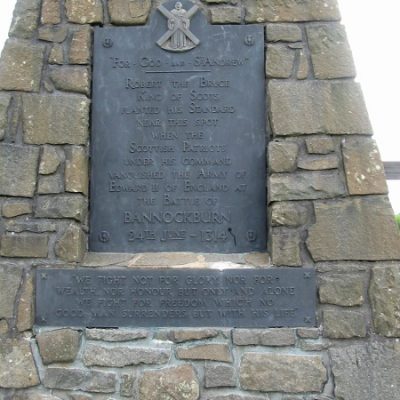The first stop of the day was in Bannockburn, a flat land south of Stirling where on June 24, 1314 the forces of Edward II and Robert I (the Bruce) met in what is now known as the Battle of Bannockburn, a battle over who held Stirling Castle and perhaps one of the most decisive (and famous) battles in the Wars of Scottish Independence.
I never tire of hearing about Bannockburn because it often appears in many works of fiction as a setting for heroic victory. As the story goes, Edward Bruce, the younger brother of Robert (the king of Scotland), began a campaign to take back Stirling Castle, which was in the hands of the British. As we already know, he who controls Stirling controls Scotland. After an unsuccessful campaign, Edward Bruce signed a pact with the English: if no English relief came to Stirling by June 24, 1314, the castle would surrender to Scotland. Robert the Bruce was angry with his brother for making the deal; he knew that this would provide opportunity for Edward to put together a strong army in hopes of breaking Scottish resistance.
By the summer, Scotland put together an army that was roughly half the size of that compiled by the England. The English were comprised of 2000 horse and 16000 foot soldier brought North by King Edward — many of whom were enemies of Robert the Bruce. However, the Scots were well prepared, better positioned, and used the Scottish schiltrom to help them in their victory. They won a heroic victory and Edward fled the field and Scotland (narrowly escaping capture).
Although it was not until May 1328 (long after Edward the Bruce’s death in 1318) that the English monarchy (under Edward III) accepted Scotland’s right to full independent status, the Battle of Bannockburn marked the end of any English pretensions to control the northern British kingdom. Robert the Bruce died a year later in June 1329 at the ripe old age of 55.
In Bannockburn there is a statue of King Robert I (the Bruce) sitting atop his horse overlooking the battle field. The statue is close to the spot where Robert the Bruce planted his standard (a flag raised on a pole to indicate the rallying point of an army). He was once quoted for saying: “We fight not for glory not for wealth nor honour but only and alone we fight for freedom which no good man surrenders but with his life.”





0 comments on “Bannockburn”Add yours →